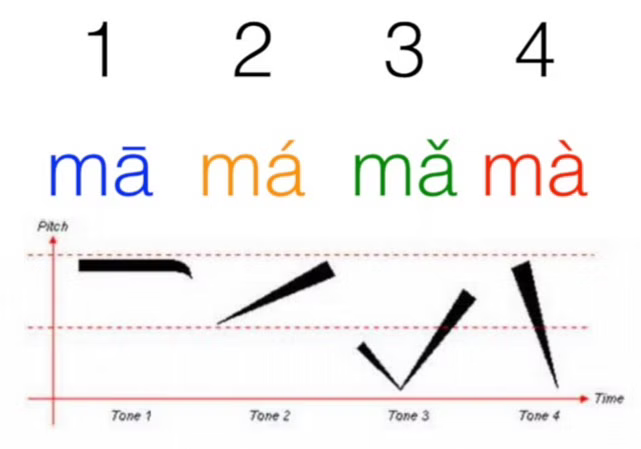All languages have intonation (at sentence or phrase level), or the rise and fall in speech over an utterance but not all languages are called tonal.
Let's take Chinese (which I don't know at all). There is, however, a standard explanation of tones in Chinese as follows below.
So what is transcribed as MA in English has four tonal patterns.
Here is a chart of those tons:
The Complete Guide To Chinese Tones
by Olly Richards
[...]
Below is a graph showing you the pitch level of the four tones. And
also the symbols used on top of the letters to represent them.

So, in English, the letter a has many sounds and each is different.
In Chinese, the pronunciation is the same for the phoneme is the same but it is the pitch ( flat, rising, dip and falling, are the typical descriptions of them in English ) within the phoneme that creates a semantic difference. This does not exist in a non-tonal language like English.
Take the word Ma, for mother in English. It will not be a change in pitch of the letter a that will make it mean something different. It will be the pronunciation of the a. For example, Ma meaning mother could presumably be:
æ (as in mat) OR ɔː(as in maw) Those are two different sounds for the a in Ma. A child can shout out: "Ma, stop tickling me!" and draw out the a sound. Or, that same child can shout out: "Ma, I want to go now!" and rise and fall in the a sound, and that would be known as whining in English but does not change the word.
Whereas in Chinese, ma can mean: “mother,” “hemp,” “horse,” or “scold” depending on the pitch used.
It is rather difficult for English speakers to learn these tones after childhood. However, it can be done.
Please note though that this is nothing compared to Vietnamese which has six tones! So good luck with that, English speakers. :) I have tried over the years to hear the difference and cannot. (There are other tonal languages, like Thai, but I can't cover all of them. This is just meant to be a taste not a meal.)
Here's an explanation of them:
And notice how poetic this description of them in English is:
Vietnamese is a tonal language. Accents are used to denote six
distinctive tones: “level” (ngang), “acute-angry” (sắc),
“grave-lowering” (huyền), “smooth-rising” hỏi, “chesty-raised” (ngã),
and “chesty-heavy” (nặng).
[Note: those tones also impact the written language.]
Vietnamese tones
